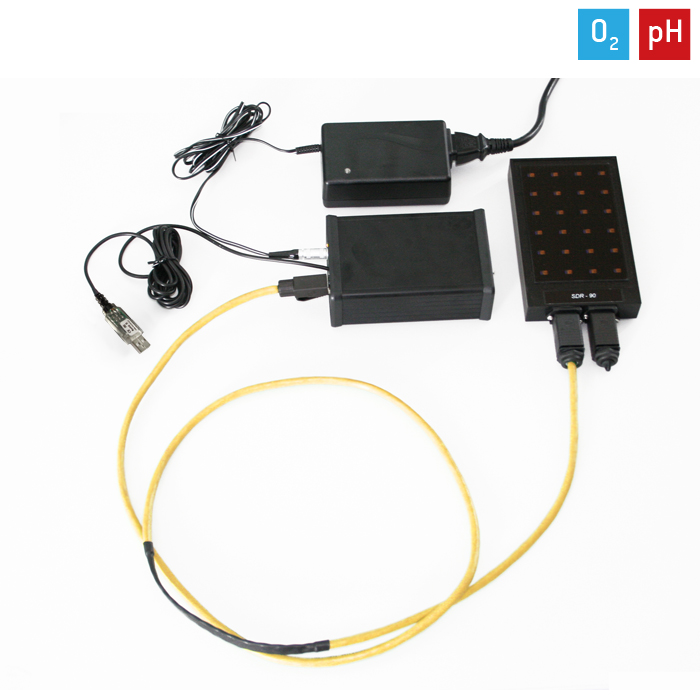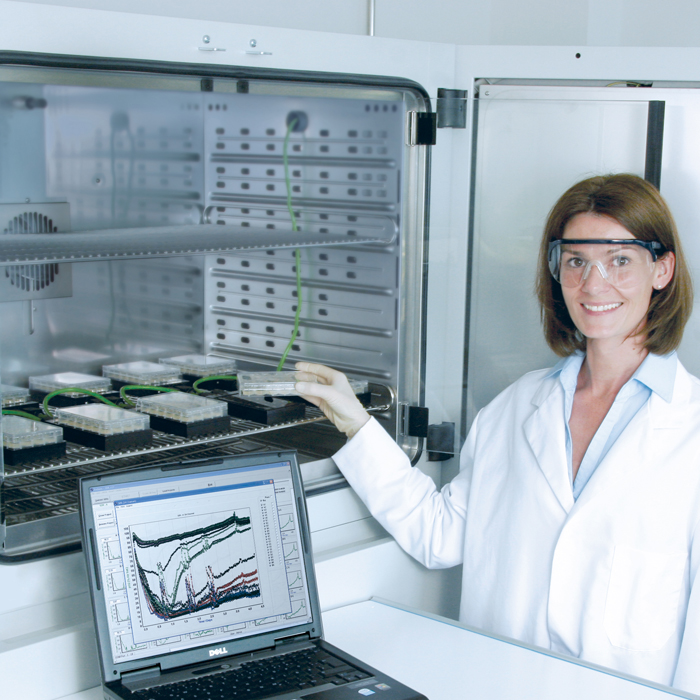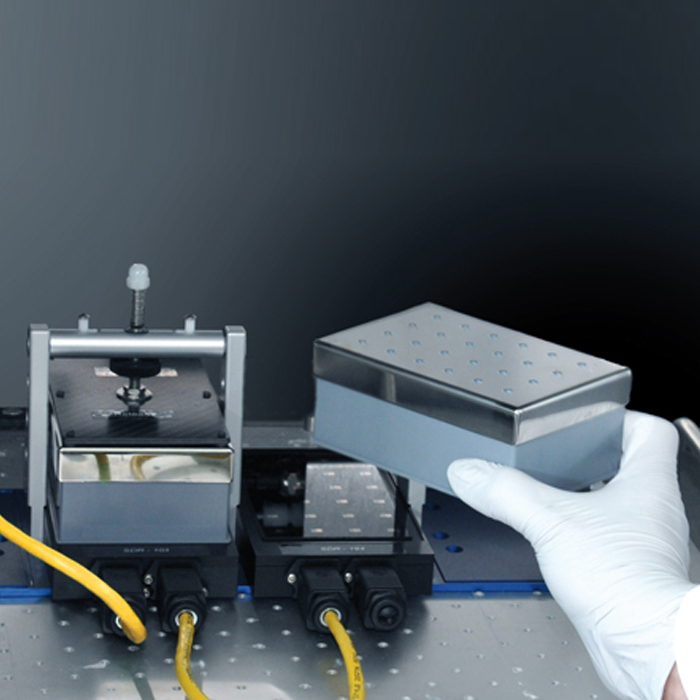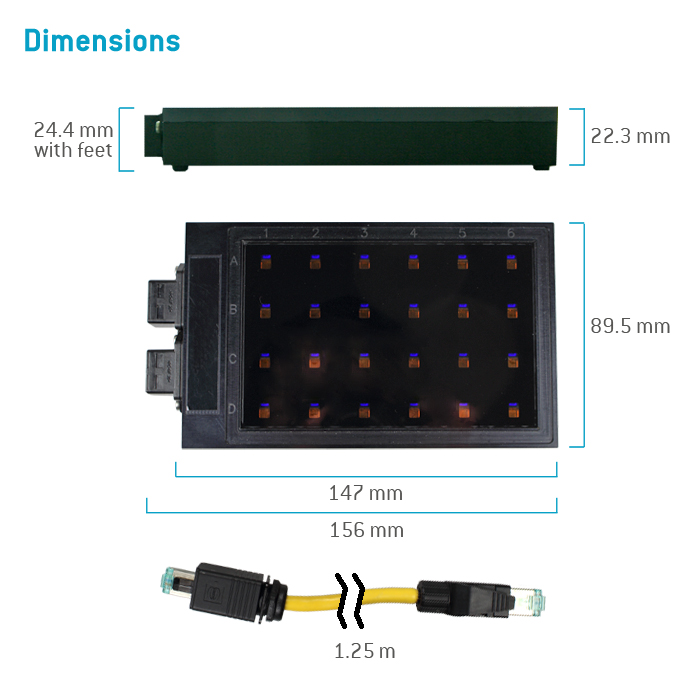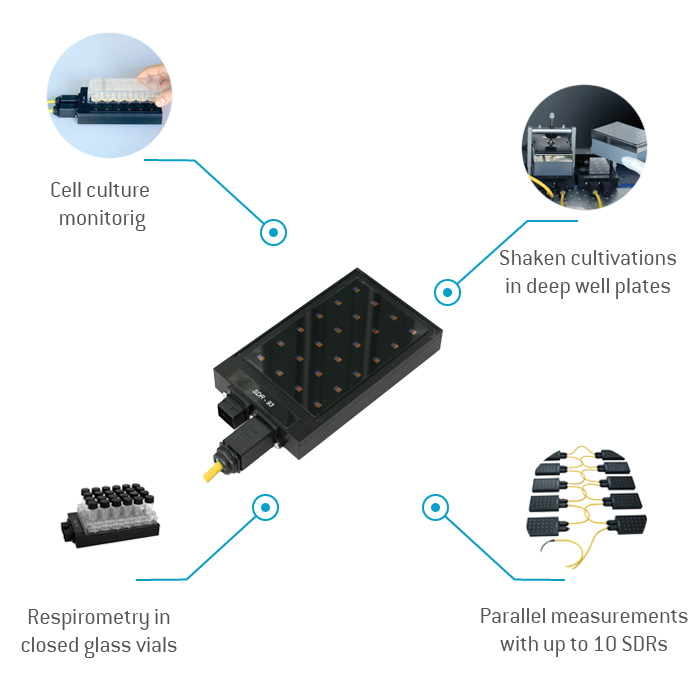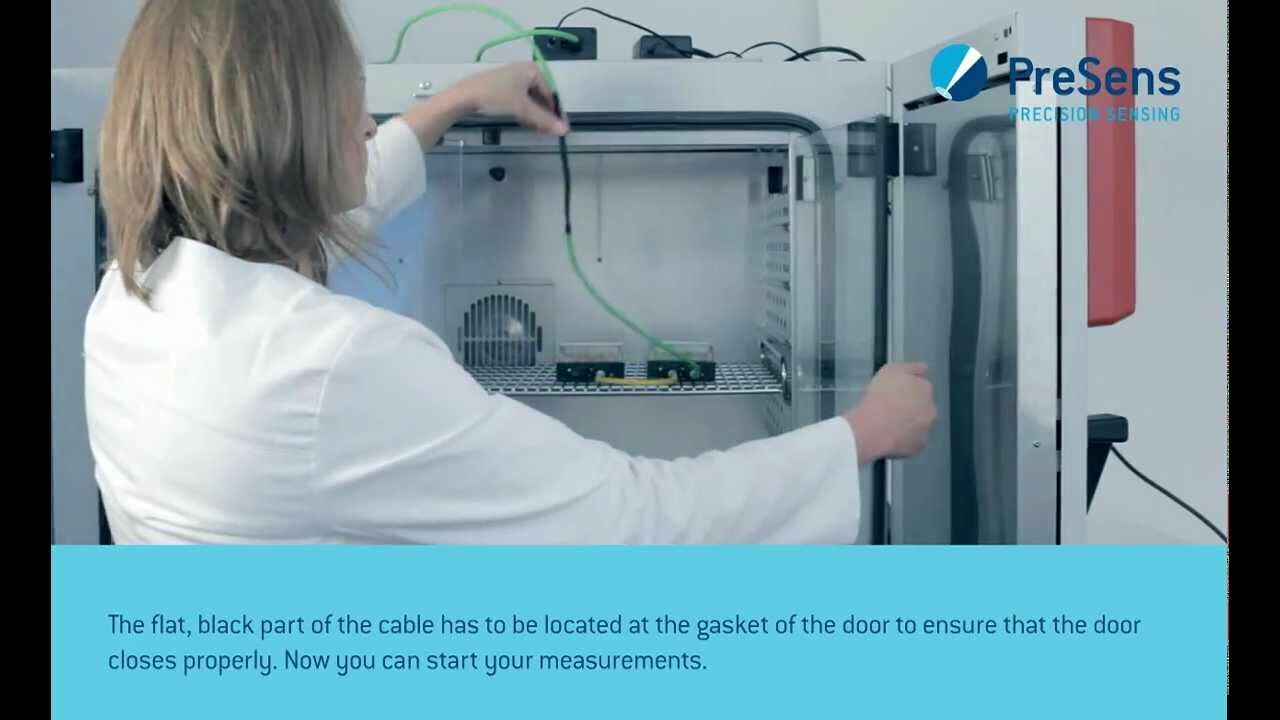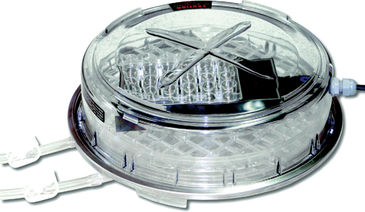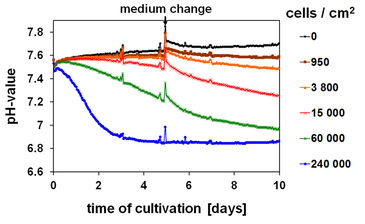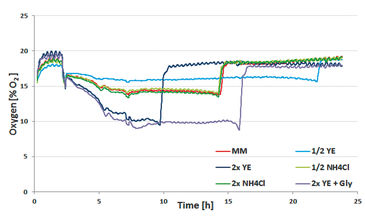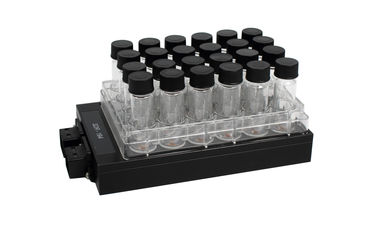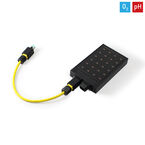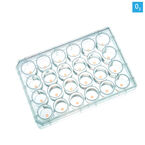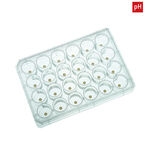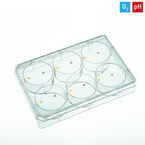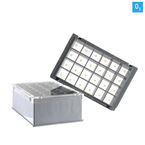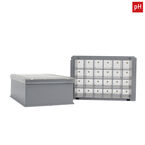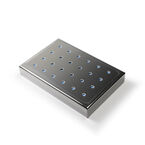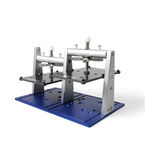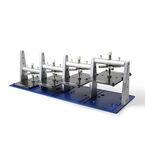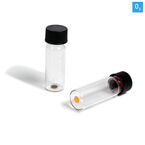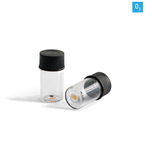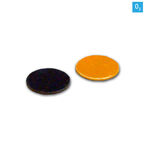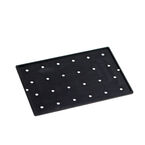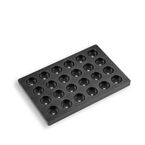Watch tutorials, webinars and informative videos about PreSens optical sensor systems.
Non-invasive Online Culture Monitoring in Multiwell Plates
SDR SensorDish® Reader Basic Set
The SDR SensorDish® Reader is a small 24-channel reader for non-invasive detection of oxygen and pH in multidishes (SensorDishes®). These contain a sensor spot at the bottom of each well. They are read out non-invasively through the transparent bottom. SensorDishes® for oxygen (OxoDish®) and pH (HydroDish®) are available in 24-well and 6-well format. 24-well deep well plates with integrated oxygen (OxoDish®-DW) and pH sensor (HydroDish®-DW) allow measurements in shaken cultures. Read out of oxygen sensors integrated in glass vessels for respiration monitoring is also possible. The SensorDish® Reader can be used in incubators and on shakers and is thus the ideal tool for cell and bacteria cultivation.
- Parallel online monitoring in disposable 24- or 6-well plates
- Non-invasive & non-destructive measurement
- Deep well plates (24-well format) & low well plates available
- Pre-calibrated
- For use in incubators and on shakers
- Optional extension for monitoring of up to 240 samples
Applications
More Security at Hypoxic Stem Cell Cultivation
The influence of medium change on dissolved oxygen (DO) at cultivation of human embryonic stem cells (hESC) was investigated at different oxygen tensions in the incubator atmosphere. Samples with full medium change using non-precalibrated medium showed a DO increase of 20 - 60 % air saturation. Other than expected, even half medium change with pre-incubated medium resulted in a notable DO increase of 10 - 30 % air saturation. The SensorDish® Reader can be used in hypoxia incubators, but also in small hypoxia chambers (see picture).
Barbara Ley, Prof. Oliver Brüstle, Life & Brain GmbH, Bonn, Germany
Oxygen and pH Monitoring in Tissue Engineering
Human chondrocytes with different start cell concentrations were cultivated in OxoDishes® and HydroDishes®. pH deviations from the control wells (medium only) could be detected even for the lowest start concentration. The acidification rates were in accordance with the different start concentrations. Medium change after 5 days led to a temporal pH increase until the samples were in equilibrium with the incubator atmosphere (5% CO2) again. Oxygen kinetics show the respective oxygen decrease.
Dr. Andreas Thomsen, CellGenix GmbH, Freiburg, Germany
Evaluating the SDR & OxoDishes® for Strain Development
Oxygen kinetics during a shaken E. coli cultivation were monitored using a Deep Well OxoDish®. Different media compositions were tested and compared to a minimal medium (MM). A higher concentration of yeast extract (YE) led to faster growth. Addition of glycerine as a second substrate prolonged the stationary phase. Ammonium chloride had no influence on the metabolism. After the substrate(s) was consumed, oxygen increased due to oxygen ingress.
Olaf Christensen, Lonza Ltd., Visp, Switzerland
Real-time Monitoring of the Respiration of Marine Zooplankton
Oxygen consumption of 3 - 4 copepod nauplii per sample was monitored in air-tight glass vials for 6 h. The nauplii were offered phytoplankton at environmental concentrations. Feeding and faecal pellet production rates were estimated simultaneously. The respiration rates were linear and steady, thus revealing that the nauplii were neither influenced by the vessel walls nor by diminishing of food. The respiration rate was compared to literature values of other species.The higher oxygen consumption of the nauplii was presumably due to constant feeding.
Dr. Marion Köster, Ernst-Moritz-Arndt-Universität Greifswald, Germany, Mar Ecol Prog Ser 353: 157-164 (2008)
Technical
| Specifications | pH* | Oxygen | |
|---|---|---|---|
| * In physiological solutions at 37 °C | |||
| Measuring range | 6.0 - 8.5 pH | 0 - 50 % O2 | |
| Resolution* | ± 0.05 pH at = 7 | ± 0.4 % O2 at 20.9 % O2 | |
| Precision* | ± 0.2 pH at pH = 7 (sensor batch calibration) ± 0.1 pH at pH = 7 (sensor spot calibration) | ± 1 % O2 at 20.9 % O2 | |
| Drift* | < 0.1 pH within one week (sampling interval 10 min.) | < 0.2 % O2 within one week (sampling interval 10 min.) | |
| Measurement temperature range | from + 15 °C to + 45 °C | ||
| Response time (t90) at 25 °C | < 120 sec. | < 30 sec. | |
| Properties | |||
| Compatibility | Aqueous solutions, ethanol (max. 10 % v/v), methanol (max. 10 % v/v), pH 2 - 10 | ||
| Cross-sensitivity | Reduced to ionic strength (salinity); high concentration of small fluorescent molecules in the visible range can interfere | ||
| Calibration | Beta- irradiated, HydroDishes® and OxoDishes® are pre-calibrated | ||
| Device | SensorDish® Reader | Splitter | Power adapter |
| Type | SDR v3 or higher | SP1.1 or higher | Mascot 9920 |
| Cleaning | Ethanol | ||
| Input | 18 - 24 V DC 150 mA | 18 - 24 V DC 1.5 A | 100 - 240 V AC 50 - 60 Hz. max. 0.9 A |
| Weight | 380 g | 240 g | |
| Dimensions | 16.3 cm x 8.9 cm x 2.2 cm | 12.4 cm x 8.0 cm x 4.5 cm | |
Related products
Resources
Publications
FAQs
Manuals
Brochures
Software
SDR version v4.0.0 - Windows XP/Vista/7/8
USB Serial Driver - Windows XP/Vista
USB Serial Driver - Windows 7/8/8.1
Media
Video: SDR SensorDish® Reader
Video: Clamp System for PreSens SDRs
Media Release: Cytotoxicity Determination
Media Release: Non-invasive Method for Monitoring Real-time Oxygen Concentrations during HSPC Culture
Media Release: Non-invasive Optical Dissolved Oxygen Quantification in Small-scale Bioreactors
Media Release: Non-invasive Oxygen and pH Sensors
Media Release: Ready-to-use Devices for Omptimizing Bioprocesses with Integrated Sensors
Media Release: Quality Assessment in 3D Cultures of Disc-Chondrocytes
Media Release: Single-use Containers Demand Single-use Sensors
Media Release: Process Monitoring in Suspension Adapted CHO Cell Culture

